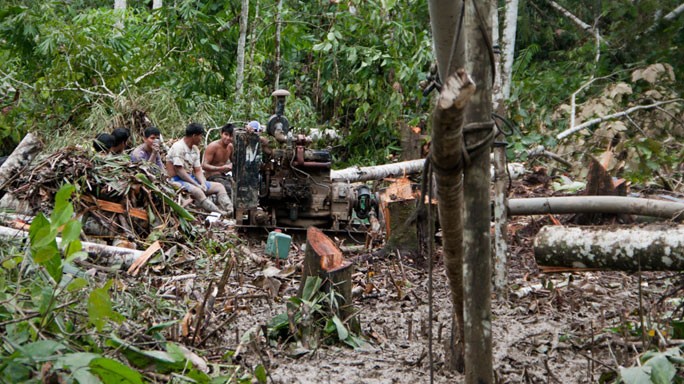In Arariboia Indigenous Land, Brazil a beat-up sign on the edge of this Amazon reserve warns strangers not to enter. For years, loggers ignored it and barreled straight into the protected indigenous territory, cutting tracks ever deeper into the diminishing forest.
But on a recent day, visitors approaching Juçaral village, just inside the reserve, encountered an improvised checkpoint operated by a militia called the Guardians. Wearing disheveled uniforms and face paint, members of the 48-man militia sauntered out, shotguns in hand, to check every arriving vehicle.
These are the men and women defending their land in the Amazon rain forest from illegal loggers. Many face threats of violence from the loggers, whose trucks and equipment they've set on fire. (Bonnie Jo Mount, Dom Phillips and Jason Aldag)
The Guardians are one of two indigenous groups on this eastern fringe of the Amazon that have taken radical action to reduce illegal logging. They have tied up loggers, torched their trucks and tractors, and kicked them off the reserves.
As a result, such logging has sharply declined in these territories. But the indigenous groups have faced reprisal attacks and death threats for their actions, raising fears of more violence in an area known for its lawlessness.
The clashes highlight the continuing grave threat to the Amazon, the world’s biggest remaining rain forest, which plays a crucial role in maintaining the world’s climate and biodiversity. From 2005 to 2012, deforestation plunged in Brazil, as the government increased its conservation efforts and cracked down on illegal loggers. But since then, the numbers have begun to creep up again. In 2014 alone, almost 2,000 square miles of Amazon rain forest were cleared by farmers, loggers and others.
Indigenous groups play an important role in preserving Brazil’s Amazon rain forest; their reserves make up roughly one-fifth of its area. Silvio da Silva, a village chief from Arariboia and an employee of the Brazilian government’s indigenous agency, said that a year ago as many as 130 logging trucks left the southern end of this reserve a day. Thanks to the Guardians, that has fallen to around 10 to 15 trucks a day.
See more at:
The Washington Post





